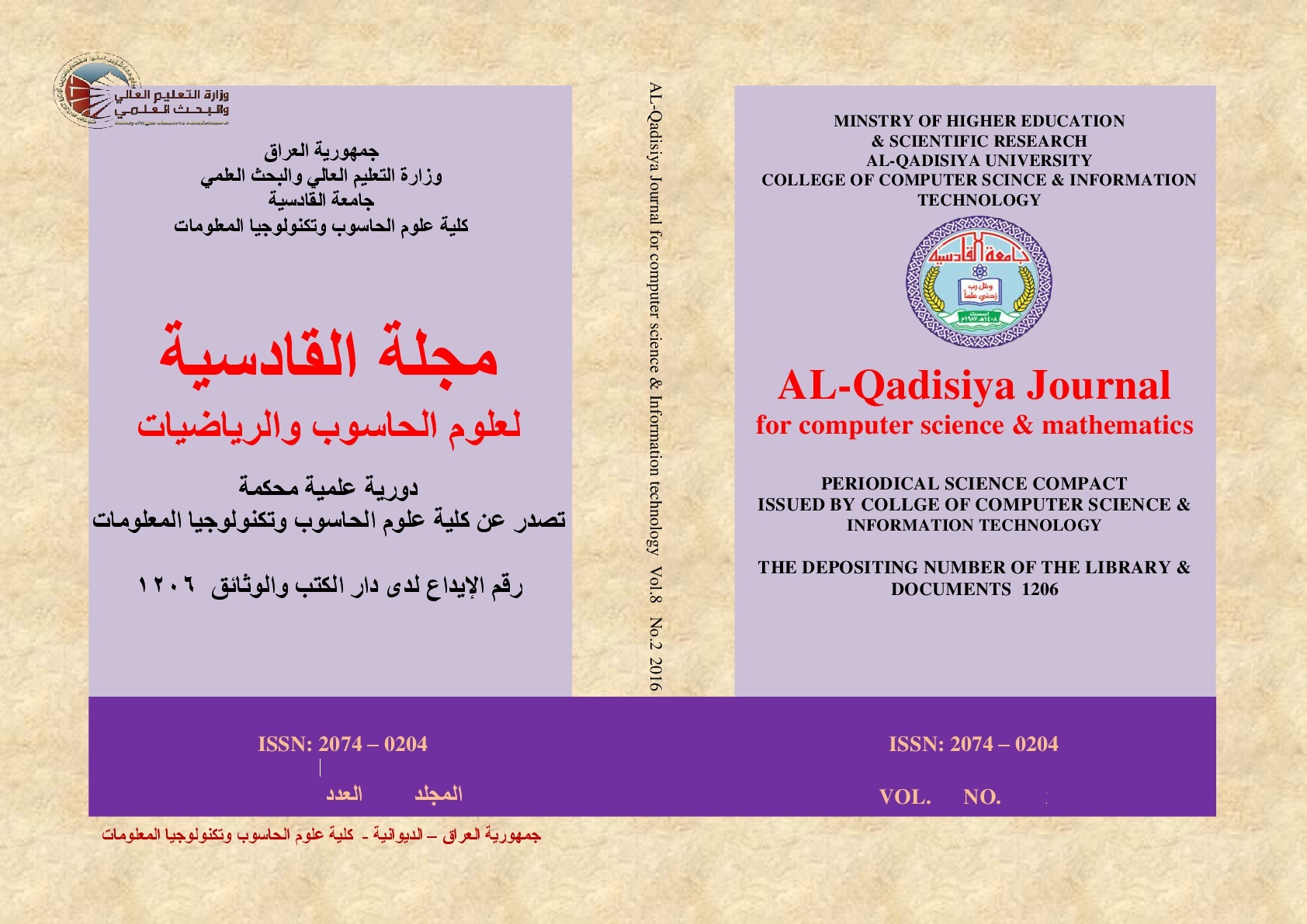Classification Of Parkinson's Disease Using Machine Learning Technique
DOI:
https://doi.org/10.29304/jqcsm.2025.17.22189Keywords:
Parkinson’s Disease, Machine Learning, Neural Networks, Medical DiagnosticsAbstract
Parkinson’s disease (PD) progresses through the nervous system as a neurodegenerative condition which causes severe effects on motor function and generates life quality problems. Standard diagnostic approaches face two main limitations that include a subjective basis and prolonged diagnostic delays. This research develops an AI-driven diagnosis classification system which involves analyzing datasets from public domains together with medical patient information stored at Baghdad hospitals. The decision tree and random forest models together with SVM and CNN provided implementation for PD diagnosis assessment through performance metrics testing. The CNN model achieved the highest correctness rate of 94.3% as well as precision of 93.1% and F1-score of 93.5% to outperform the other proposed models during testing. The application of CNN on the local dataset achieved a strong 90.7% accuracy because it successfully adapted to different data quality and format conditions. The research determined that tremor frequency and voice pitch variation together with hand movement speed proved to be the most effective diagnostic features. Research demonstrates AI diagnostic technologies can assist early Parkinson disease identification at healthcare sites which lack resources by showing the necessity of better digital networks and standardized research data alongside professional education for medical staff.
Downloads
References
Das, R. (2010). A comparison of multiple classification methods for diagnosis of Parkinson’s disease. Expert Systems with Applications, 37(2), 1568-1572.
Little, M. A., McSharry, P. E., Hunter, E. J., Spielman, J., & Ramig, L. O. (2009). Suitability of dysphonia measurements for telemonitoring of Parkinson’s disease. IEEE Transactions on Biomedical Engineering, 56(4), 1015-1022.
Prashanth, R., Dutta Roy, S., Mandal, P. K., & Ghosh, S. (2018). High-accuracy detection of early Parkinson’s disease through multimodal features and machine learning. International Journal of Medical Informatics, 117, 58-70.
Sakar, B. E., Isenkul, M. E., Sakar, C. O., Sertbas, A., Gurgen, F., Delil, S., Apaydin, H., & Kursun, O. (2019). Analyzing the effectiveness of vocal features in early detection of Parkinson’s disease. PLoS ONE, 14(5), e0215673.
Schrag, A., Horsfall, L., Walters, K., Noyce, A., & Petersen, I. (2015). Prediagnostic presentations of Parkinson’s disease in primary care: A case-control study. The Lancet Neurology, 14(1), 57-64.
Shah, S. A., & Laghari, K. A. (2021). AI and machine learning-based methods for Parkinson’s disease diagnosis: A systematic review. Artificial Intelligence in Medicine, 117, 102106.
Titova, N., & Chaudhuri, K. R. (2017). Non-motor Parkinson’s: The hidden face of Parkinson’s disease. Practical Neurology, 17(3), 240-249.
Breiman, L. (2001). Random forests. Machine Learning, 45(1), 5-32.
Breiman, L., Friedman, J., Olshen, R., & Stone, C. (1984). Classification and regression trees. CRC Press.
Cortes, C., & Vapnik, V. (1995). Support-vector networks. Machine Learning, 20(3), 273-297.
Goodfellow, I., Bengio, Y., & Courville, A. (2016). Deep learning. MIT Press.
LeCun, Y., Bengio, Y., & Hinton, G. (2015). Deep learning. Nature, 521(7553), 436-444.
Litvan, I., Goldman, J. G., Tröster, A. I., Schmand, B. A., Weintraub, D., Petersen, R. C., & Emre, M. (2012). Diagnostic criteria for mild cognitive impairment in Parkinson’s disease. Movement Disorders, 27(3), 349-356.
Murphy, K. P. (2012). Machine learning: A probabilistic perspective. MIT Press.
Powers, D. M. (2011). Evaluation: From precision, recall and F-measure to ROC, informedness, markedness and correlation. Journal of Machine Learning Technologies, 2(1), 37-63.
Quinlan, J. R. (1996). Improved use of continuous attributes in C4.5. Journal of Artificial Intelligence Research, 4, 77-90.
Saito, T., & Rehmsmeier, M. (2015). The precision-recall plot is more informative than the ROC plot when evaluating binary classifiers on imbalanced datasets. PloS One, 10(3), e0118432.
Shalev-Shwartz, S., & Ben-David, S. (2014). Understanding machine learning: From theory to algorithms. Cambridge University Press..
Rabie, H., & Akhloufi, M. A. (2025). A review of machine learning and deep learning for Parkinson’s disease detection. Discover Artificial Intelligence, 5(1), 24.
Yang, Y., Yuan, Y., Zhang, G., Wang, H., Chen, Y. C., Liu, Y., Tarolli, C. G., Crepeau, D., Bukartyk, J., Junna, M. R., Videnovic, A., & Ellis, T. D. (2022). Artificial intelligence-enabled detection and assessment of Parkinson’s disease using nocturnal breathing signals. Nature Medicine, 28(12), 2201–2208.
Liu, T., Hartono, S., Lee, W., Teh, P. Y., Hou, W., Chen, R. C., Chen, C., Lim, E. W., Tan, L. C. S., Tan, E. K., & Chan, L. L. (2024). Classification of Parkinson’s disease by deep learning on midbrain MRI. Frontiers in Aging Neuroscience, 16, 1425095.
García-Ordás, M. T., Benítez-Andrades, J. A., Aveleira-Mata, J., Alija-Pérez, J. M., & Benavides, C. (2024). Determining the severity of Parkinson’s disease in patients using a multi-task neural network. Multimedia Tools and Applications, 83, 6077–6092.
Ding, J. E., Hsu, C. C., & Liu, F. (2024). Parkinson's disease classification using contrastive graph cross-view learning with multimodal fusion of SPECT images and clinical features. In Proceedings of the IEEE International Symposium on Biomedical Imaging (ISBI 20).
Downloads
Published
How to Cite
Issue
Section
License
Copyright (c) 2025 Wissam Abbas Hadi

This work is licensed under a Creative Commons Attribution-NonCommercial-NoDerivatives 4.0 International License.













